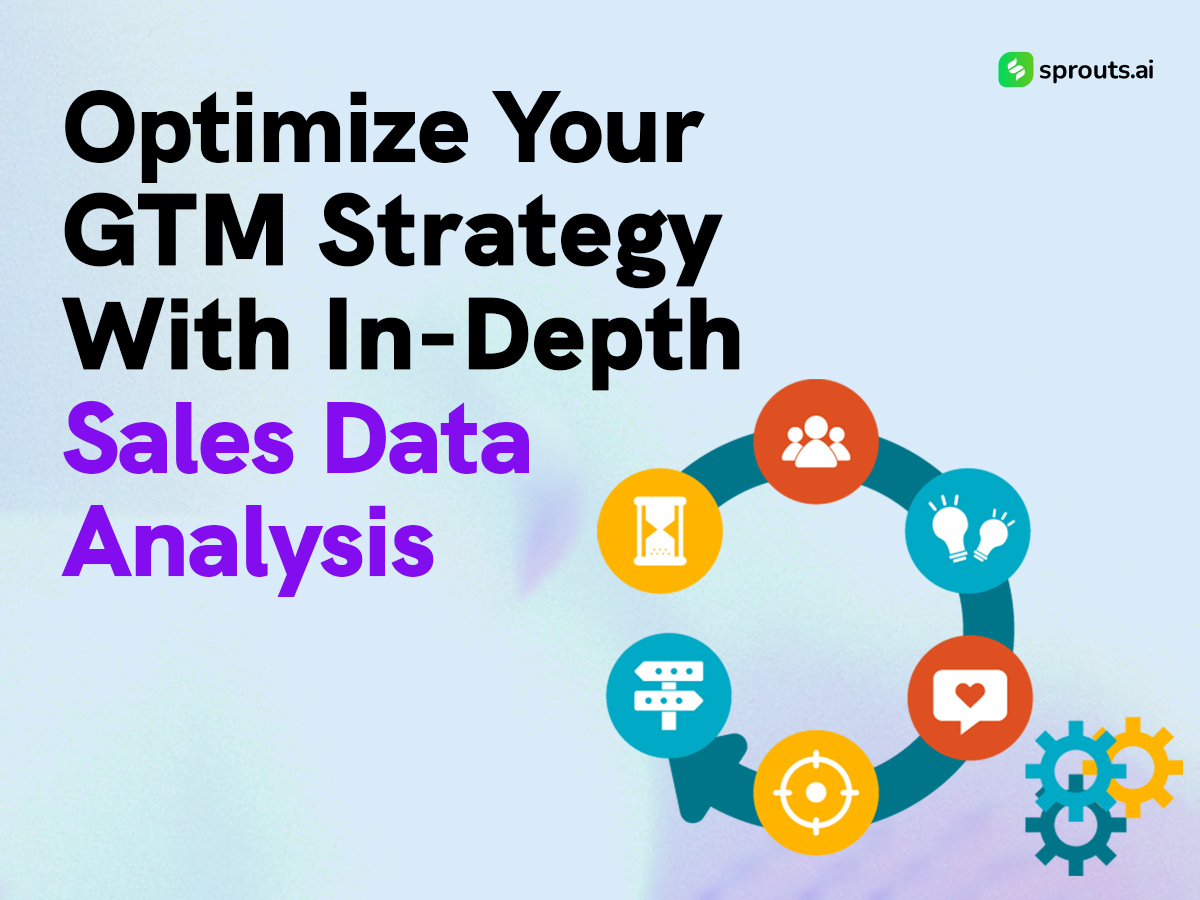The effectiveness of a go-to-market (GTM) strategy can be the difference between thriving and languishing in the market. Today data-driven decision-making is crucial, and hence harnessing the power of sales data analysis has emerged as a pivotal step toward optimizing B2B go-to-market strategy. By leveraging the insights hidden within the data, businesses can refine their approach, enhance customer engagement, and drive revenue growth. This article delves into the transformative potential of in-depth sales data analysis in B2B go-to-market strategy.
Understanding the Essence of B2B Go-to-Market Strategy
A B2B go-to-market strategy encompasses a company’s tactical and strategic actions to bring its products or services to the market and effectively reach its target audience. It involves a careful blend of marketing, sales, and distribution efforts to create a seamless journey from product development to customer acquisition. The strategic significance of analyzing sales data cannot be overstated in this context.
Unlocking Insights through Sales Data Analysis
Customer Segmentation and Targeting:
In-depth sales data analysis allows businesses to segment their customers based on various parameters such as industry, company size, geographic location, and purchasing behavior. This segmentation enables targeted marketing and sales efforts that resonate with specific customer needs, resulting in higher conversion rates. By understanding different customer segments’ preferences and pain points, businesses can tailor their messaging and offerings more effectively.
Demand Forecasting:
Accurate demand forecasting is a cornerstone of successful B2B go-to-market strategies. Sales data analysis helps identify patterns and trends in customer demand, enabling businesses to optimize inventory levels, production schedules, and resource allocation. This proactive approach minimizes the risk of stockouts or overstock situations, enhancing operational efficiency and customer satisfaction.
Product Performance Evaluation:
Sales data provides valuable insights into the performance of different products in the market. Businesses can make informed decisions about product development, pricing strategies, and promotional efforts by analyzing which products are driving the most revenue and underperforming. This data-driven approach ensures that resources are allocated to products with the highest potential for success.
Sales Channel Effectiveness:
A comprehensive B2B go-to-market strategy often involves multiple sales channels, such as direct sales, resellers, and e-commerce platforms. Sales data analysis helps evaluate each channel’s performance by measuring metrics like conversion rates, customer acquisition costs, and revenue generated. This assessment enables businesses to allocate resources to the most effective channels and make necessary adjustments to improve overall performance.
Challenges and Solutions in Sales Data Analysis
Data Quality and Integration:
Gathering accurate and relevant sales data from various sources can be complex. Disparate systems and consistent data formats can help the analysis process. To overcome this challenge, businesses should invest in robust data integration tools and ensure data accuracy through regular audits.
Analytical Expertise:
Extracting meaningful insights from sales data requires analytical expertise. Companies can bridge this gap by training their teams or collaborating with data analysis experts. Alternatively, they can leverage user-friendly data analysis tools that require minimal technical skills.
Privacy and Security Concerns:
Handling sensitive sales data requires stringent data privacy measures. Implementing robust data encryption, access controls, and compliance with relevant regulations (such as GDPR or CCPA) is crucial to maintain customer trust and legal compliance.
The Path Forward: Optimizing B2B Go-to-Market Strategy
Data-Driven Decision Culture:
To fully capitalize on the potential of sales data analysis, businesses must foster a culture that values data-driven decision-making. This involves integrating data analysis into the decision-making process across departments and levels of the organization.
Continuous Learning and Adaptation:
The B2B landscape is constantly evolving, and so should your go-to-market strategy. Regularly analyze sales data to identify shifts in customer behavior, emerging market trends, and competitive dynamics. Use these insights to adapt and refine your strategy accordingly.
Investment in Analytics Tools:
Consider investing in advanced analytics tools that simplify the process of data extraction, analysis, and visualization. These tools can empower your teams to perform complex calculations without relying heavily on technical expertise.
Collaboration between Sales and Marketing:
Effective collaboration between sales and marketing teams is pivotal. By sharing insights from sales data analysis, both teams can align their efforts and strategies to create a more cohesive customer experience.
Embracing the Data Advantage in B2B Go-to-Market Strategy
A well-crafted go-to-market strategy can distinguish between market leadership and obscurity. By harnessing the power of in-depth sales data analysis, businesses can supercharge their GTM strategies, achieving heightened customer engagement, optimized resource allocation, and sustained revenue growth. With the right tools, mindset, and approach, the transformational potential of sales data analysis can be fully realized, positioning businesses at the forefront of their industries.
In a world driven by data, the question is not whether businesses should embrace sales data analysis in their B2B go-to-market strategies but how effectively they can do so. The future belongs to those who can translate raw data into actionable insights and turn insights into successful strategies.

